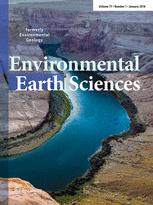Multi-hazard assessment modeling comprises an essential tool in any plan that aims to mitigate the impact of future natural disasters. For a particular area they can be generated by combining assessment maps for different types of natural hazards. In the present study, the analytical hierarchy process (AHP) supported by a Geographical Information System (GIS) was utilized to initially produce assessment maps on hazards from landslides, floods and earthquakes and subsequently to combine them into a single multi-hazard map. Evaluation of the reliability of the proposed model predictions was performed through uncertainty analysis of the variables that we used for producing the final model. The drainage basin of Peneus (Pinios) River (Western Peloponnesus, Greece), an area that is prone to landslides, floods and seismic events, was selected for the implementation of the aforementioned approach. Our findings revealed that the high hazard zones are mainly distributed in the western and north-eastern part of the region under investigation. The calculated multi-hazard map, which corresponds to the potential urban development suitability map of the study area, was classified into five classes, namely of very low, low, moderate, high and very high suitability. The most suitable areas for urban development are distributed mostly in the eastern part, in agreement with the low and very low hazard level for the three considered natural hazards. In addition, by performing uncertainty analysis we showed that the spatial distribution of the suitability zones does not change significantly. Ultimately, the final map was verified using the actual inventory of landslides and floods that affected the study area. In this context, we showed that 80% of the landslide occurrences and all the recorded flood events fall within the boundaries of the moderate, low and very low suitability zones. Consequently, the predictive capacity of the applied method is quite good. Finally, the spatial distribution of the urban areas and the road network were compared with the derived suitability map and the results revealed that approximately 50% of both of them are located within areas susceptible to natural hazards. The proposed approach can be useful for engineers, planners and local authorities in spatial planning and natural hazard management.


